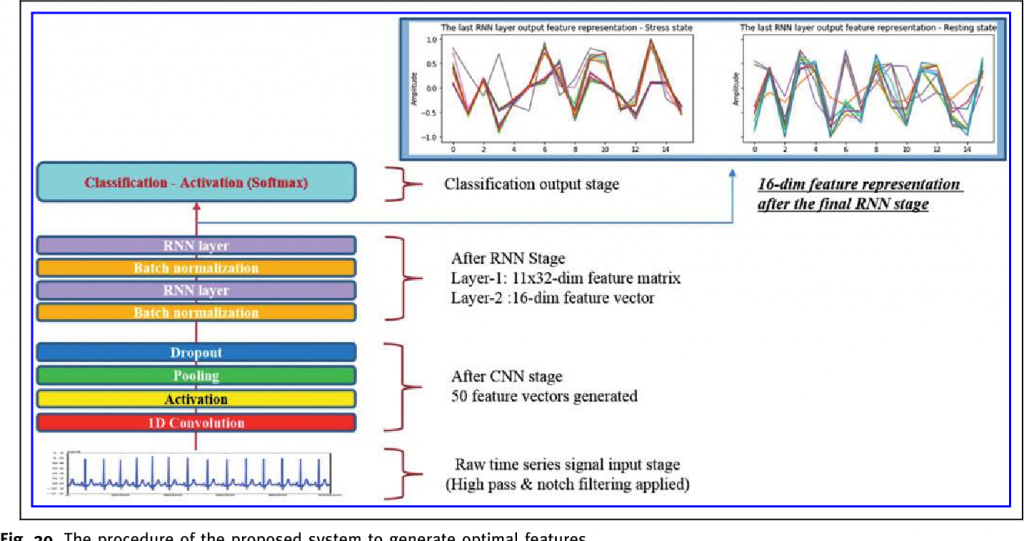Bio-Computing & Machine Learning Laboratory
Research Project


Sleep scoring is the first step for diagnosing sleep disorders. A variety of chronic diseases related to sleep disorders could be identified using sleep-state estimation. This paper presents an end-to-end deep learning architecture using wrist actigraphy, called Deep-ACTINet, for automatic sleep-wake detection using only noise canceled raw activity signals recorded during sleep and without a feature engineering method.
As a benchmark test, the proposed Deep-ACTINet is compared with two conventional fixed model based sleep-wake scoring algorithms and four feature engineering based machine learning algorithms. The datasets were recorded from 10 subjects using three-axis accelerometer wristband sensors for eight hours in bed. The sleep recordings were analyzed using Deep-ACTINet and conventional approaches, and the suggested end-to-end deep learning model gained the highest accuracy of 89.65%, recall of 92.99%, and precision of 92.09% on average. These values were approximately 4.74% and 4.05% higher than those for the traditional model based and feature based machine learning algorithms, respectively.
In addition, the neuron outputs of Deep-ACTINet contained the most significant information for separating the asleep and awake states, which was demonstrated by their high correlations with conventional significant features. Deep-ACTINet was designed to be a general model and thus has the potential to replace current actigraphy algorithms equipped in wristband wearable devices.










